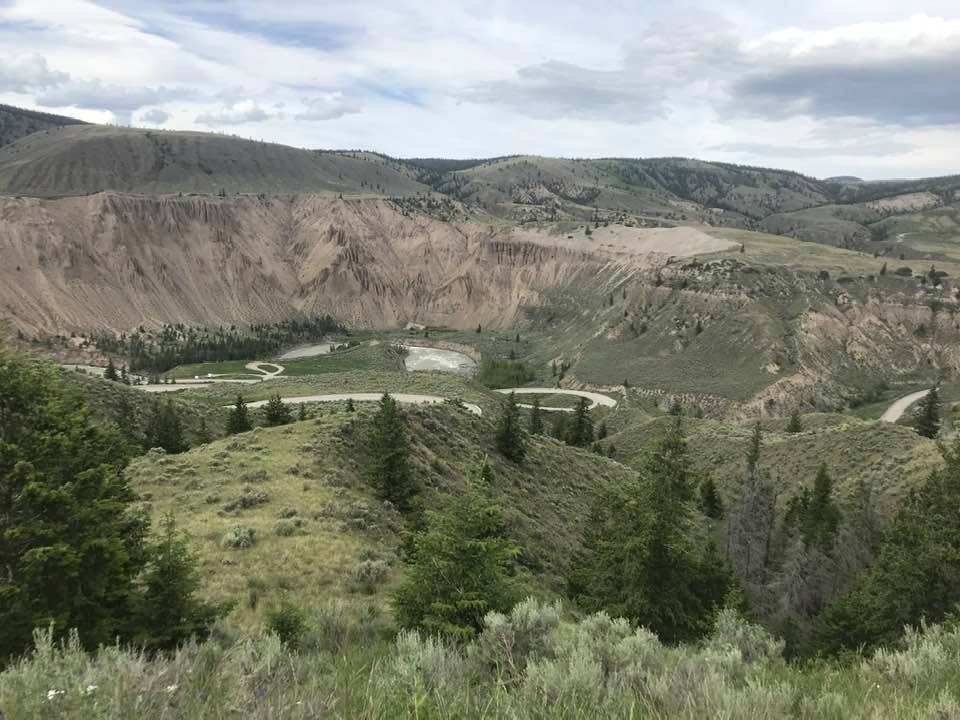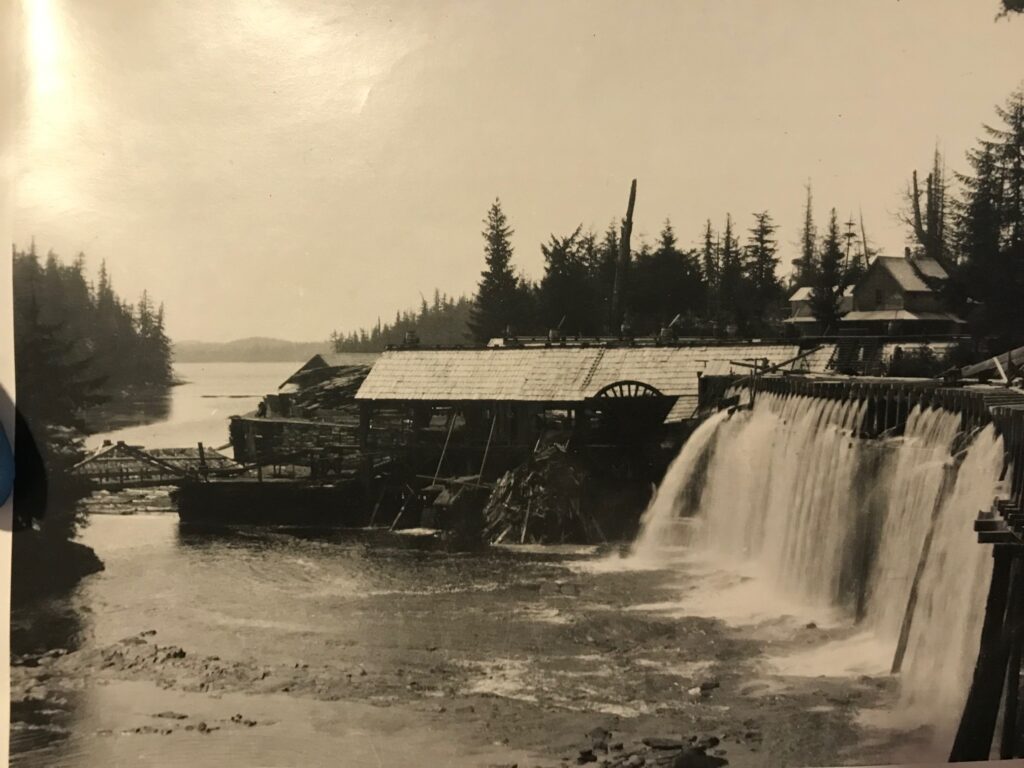The most important lesson I have gathered through this course has been the reminder that the role of facilitator is central to the work we do as Instructors in Open learning and that students sometimes need support and feedback to complete assignments and fulfill the course requirements. This is actually the most satisfying aspects of the work. The most noticeable change in my thinking actually came from my conversation with my OLFM colleague regarding suggesting to students use the Student Café platform to encourage that social space for technical or institutional questions. I don’t think I would suggest using blogging as an activity, but I often do make use of discussion forums, as part of my ‘blended’ teaching for semester courses.
The most surprising aspect of the course for me however is the student feedback to the course materials was actually not addressed in the course as a topic of effective planning in relation to learning outcomes and assessment. The role of reflection is significant but so too is act of receiving insightful feedback. I will continue to look for ways for students to interact, but also continue to interact or direct their insights at the conclusion of the course. As it stands now students are to create reflective posts as per their assignments, but then have no control on that content, once the course is complete or even how long these posts are open to other students to review. These are the ethical considerations I also consider when using open platforms for my own posting and reflection, and certainly have raised interest questions for my teaching methods and planning moving forward.
After sorting out the word press menu system and I have decided that the word salad is a similar function and fits better with my past research methodologies and the way I visualize and work with data. It is not that I am locked in analogue technology so much that I don’t think this type of sorting of information works for me as and is entirely dependent on interactive technology to complete the task. I understand engagement, I apply the critical inquiry process and tend to follow a systematic set of outcomes and frame my teaching practice within a social and cognitive presence. I think one thing that has been understated in this course is student feedback, and reflection rather than just assessment through testing. This has not been highlighted enough in my mind in the inquiry process.
Finally, I think that open platforms are good for to encourage reflective learning, but there too are hidden frames and social risks that come into play in how one ‘reflects’ publicly. Perhaps there could be personal log/journal that is not published could be also promoted to provide reflective balance.
A few days ago, I had a conversation with a colleague that I had not seen in person for over a year. It was nice to be see him face to face, but also to be in a setting that was casual, and removed from the tensions of a work-place. We got caught up on our respective educational and research projects, which served to ground our conversation.
I asked him what he saw as the most challenging aspect to forging an online community in a synchronous course, and his reply was not what I expected, since I was anticipating a technical limitation or a concrete problem that could actually have a straight-forward solution.
Instead, his response was more philosophical in nature, in that the problem or challenge in post-secondary education continues to be the didactic nature where there are experts who impart – lecture, dispense knowledge to groups of learners. Despite years of revolutionary change in the technology and equipment and methodologies, the underlying way of education is still very much of expert imparting wisdom to a student. Rethinking and redefining ‘education’ was way beyond the purpose of our conversation, yet his comment touches on the recurrent theme of technology as a tool rather than the panacea for all the challenges learners or instructors face.
We need to adapt to both ourselves, our technology comfort levels and teaching practice to know where students are at.
He also added that we cannot take away the responsibility of students to adapt and develop the skills needed to receive the information we are to impart.
When I asked for specific strategies to get students, who are working through the course content on their own, he again stressed personal action, and that when students reach out asking for basic information (outside the parameters of course content) that he directs them to the student café forum in moodle. This was a wonderfully useful suggestion for me since I actually had forgotten of the Student Café, and the day before I had a student ask some basic access questions. By reminding me of the Student Café, I immediately visualised a cafeteria meeting place, where students can ‘hang out’ ask questions of their peers and form their own live ‘active’ networks. This will be something that I can put into my practice immediately since it uplifts a student’s ability to solve problems and navigate the complexities of online academic
Learning beyond the individual course content. Hopefully we can continue to expand both the technology to create new definitions of educational experiences where both the instruction and facilitation are balanced and that students are active participants, engaging will all members of Community of Inquiry.
With students returning to the classroom or through a blended online environment, I wanted to design an activity that would begin in the classroom and then continue the activity with an online, ‘report back’ collaborative exercise. I want students to see the connections between course content (lecture, readings, suggested resources) as a continuum of interconnected learning opportunities.
The learning outcomes were
1) learn where the new library was located on campus
2) demonstrate the tasks and skills necessary for a successful library database searches,
3) identify the steps and procedures for locating the selected resources (articles/books) in either the physical library or online e-books.
4) articulate the process in an online discussion forum
The activity was to review the textbook for suggested readings at the end of a specific chapter, find an author listed. Then they were to visit the library website and look for a book by the same author, and then located it on the shelf or online.
The final step was to go the that section in the library and take a picture of the book on the shelf, and upload this image and write a description in the online discussion forum to ‘share’ their results.
After reviewing the article by Anderson et al. (2001) I do not feel that my views of effective teaching practice have changed exactly but maybe I can see a framework that might provide needed structure for analysis. However, I feel that authors’ frameworks of assessment do not include essential qualities of intuition and compassion. Even the metaphorical pioneer teachers had to rely on their creative side to find ways to keep students engaged, and in most cases, deal with the struggles of loneliness in rural and isolated environments and likely a chronic lack of resources (book, pencils and chalk).
One practice that flows from the compassion is also the ability of teacher as advocate, and even in an online course we must be willing and able to assist students connect with mental health resources, or financial aid/student loan information. Often this is challenging for contract faculty who sometimes are teaching multiple courses, for different institutions during the same semester.
Perhaps the most significant characteristic that generates effective teaching practice is self-awareness for our own individual needs. The ability to pull back, and to take a critical look is essential but also sometimes a luxury that contract faculty do not think they have. The idea of teaching presence needs to be promoted grounded in a well-rounded sense of connectedness; one that not segment life from outside the classroom or computer forum. One interacts and impacts the other as with any other occupation, and we must be ready to evaluate and find solutions to both challenges in both spheres.
When thinking of recent effective teaching practice, I thought about how my mind has changed with social media format of twitter as a teaching tool. I had been resistant to seeing social media as an educational tool since I have a background in old school media and broadcasting where all content is produced and refined before it hits the literal air waves. Twitter, for me, has become a main go-to source of current happenings like headlines in a newspaper used to be. It was rather revolutionary for me to then shift my thinking when I experienced twitter as an academic platform. Twitter conferences and twitter feeds of historians or other scholars I follow has radically altered my perception and criteria of effective teaching tools.
I have come to realise that limits to text and the inclusion of a single graphic can be a powerful tool as it directs the information in a very focused way. Of course it can be dangerous undertaking too, with the openness of the platform I have found that generally the ideas (from those who post replies) can be a very positive and add to new knowledge and the continue the conversation in all sorts of ways.
In addition, the openness of questioning or help in finding teaching or resources has help build a social/teaching community that we all desparately need during periods of pandemic isolation.
The two most prominent aspects for me from this course are the needs for consistent and clear presentation methods when designing support materials and to provide students equal access and opportunity to connect both with myself as course instructor and with fellow students even for students in an open learning, self directed course with continuous enrolment. Multi modal opportunities are good ways to enhance and reinforce course content, however I found the lesson segment of Clark and Mayer’s principles to be of greatest interest. I often tell students that ‘less is more’ when they are writing assignments yet I continue to complicate my lecture presentations with too much information and sometime confusing graphics.
On the other hand, when creating media to enhance social presence, and provide important information on academic supports, it helps to direct students towards useful resources and diminish potential stigma at the same time. I had not thought of it before, but making a short video about those supports, that students can view on their own, is a good way to create greater social presence.
This is a short video on a few resources for on TRU history students.
reflection — post OLT 201.2
As I review my first post for this course (OLT 201) I realise that I set up my introduction describing myself and research interests, which is how I interpreted the task. The way I understood this activity was about creating a multi media experience to increase audience engagement. If the task was to encourage greater interaction and to ‘enhance social presence’, I would definitely have changed up the written content to reflect my interest in the course materials and then added some urls of directing students to engaging websites, connected to the course. I don’t necessarily feel that I would change either my audio commentary or the photo, but would update to written content to include contact information and invite students to contact me directly with any questions.
In terms of ‘cohesive responses’ I already try to mindfully practice these activities in any course I teach, whether online or face to face. But not until the course is well underway so that might be something that I would change.
The reality is in 2021 we all have some form of digital footprint, even if we didn’t create it ourselves. The concept of ‘social presence’ is a positive direction to move in, but I think we also should be aware with so many new and engaging social media formats out there, students may already have established certain opinions or assumptions that we as instructors have no control over. We cannot manage these assumptions, but rather meet each learner with equity, respect and good humour, and that is a good start.


